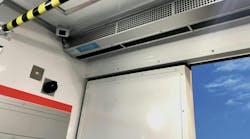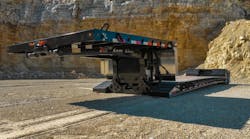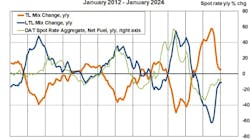COLLEGE days. No car, no credit card, and very little cash in the wallet.
Getting home for the weekend involved finding someone who was going your way and who had room for an extra passenger.
“I can take you,” the friend said. “We’ll split the cost of the gas. I’ve got a full tank. You can buy the next one.”
Sounded like a good plan. But just over two hours into the three-hour trip, the 1969 Ford Torino was about to burn the last of that tank of gas.
How can you be out of gas already?
“Oh, she only gets 8 mpg,” the friend replied. “But she sure is fast.”
Gas guzzlers ruled the road back then, right up until the first OPEC oil embargo caused an unprecedented spike in the cost of gasoline. At that point, the Torino had to go. Fast. It’s time for something like the Pinto, a substantially smaller car that didn’t burn much gas unless struck violently from behind.
Suddenly Detroit and Washington were scrambling to build—and mandate—fuel efficient vehicles. Congress passed the Energy Conservation and Policy Act of 1975—which established corporate fuel economy standards. Initially the mandate was 18 miles per gallon. Complying was easy. At a time when some passenger cars burned fuel as fast as today’s highway tractors, there was plenty of low-hanging fruit for automotive engineers to harvest.
This year will mark 40 years of CAFE standards—regulations aimed at cars and light-duty trucks. During that time, Washington and Detroit have developed—and learned to deal with—a wide range of concepts designed to make the legislative mandate work. Regulators had to learn the car business because Congress specified that regulations have to be technologically feasible and have “economic practicability.”
With today’s cars and light trucks clean and efficient, regulators are now turning to commercial vehicles for fuel savings and reductions in greenhouse gas emissions. Phase 1 in this process began in 2014, requiring tractor manufacturers to improve fuel economy by 3% from their 2010 baseline engines. Another 3% improvement will be mandated by 2017.
The next step for the National Highway Traffic Safety Administration and the Environmental Protection Agency is implementation of Phase 2—the regulation of work trucks and truck trailers.
How can you regulate fuel consumption and greenhouse gas emissions for a vehicle that doesn’t have an engine? For details on what EPA and NHTSA are thinking, see our story on Page 28.
One of the biggest challenges for regulators to overcome is the very thing that has helped them develop workable regulations for automobiles—years of working with the car industry. But these lessons don’t transfer easily. Work trucks and truck trailers are totally different businesses. These vehicles frequently are built as one-of-a-kind products specifically to customer specifications. As such, the manufacturer’s ability to test these unique vehicles is limited. And their ability to control their “corporate average fuel economy” is almost nonexistent. The product mix is entirely up to the customer. The manufacturer or upfitter can’t sell two fuel efficient models to make up for the gas guzzler he sold last week.
To their credit, NHTSA and EPA officials recognize that trailers and work trucks present a different set of challenges. The agencies have been reaching out to NTEA, TTMA, and other organizations to learn more about the industry. Great Dane has even gone so far as to set up a website where industry stakeholders can provide data that the trailer manufacturer will compile and present to regulators. The goal of all of these efforts is to have rulemaking that works.
What’s next? We will find out officially when EPA and NHTSA announce proposed rules for the next round of fuel economy and greenhouse gas standards. Their proposal is expected to be published in March.
Coming up with workable regulations can be a challenge. Ironically, even territory that is familiar to regulators is changing. Car manufacturers are now concerned about meeting their CAFE numbers. As oil prices plummet, customers aren’t so concerned about fuel economy. Big engines are back in vogue. As a result, the average fuel economy of new vehicles fell to 25.1 mpg in December, in part because of a combined 17% increase in Class 1 and 2 truck sales.
It’s a whole new game. At least for a while, fuel economy is taking a back seat to performance. Is anyone interested in a used Torino? ♦










